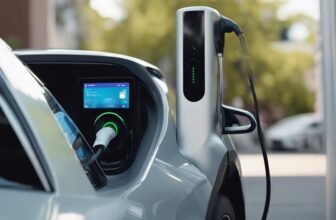
Imagine living in a home where every aspect is seamlessly connected and intelligently controlled. A place where your lights turn on when you enter a room, your thermostat adjusts to your preferred temperature, and your security system keeps you safe.
This level of automation and convenience is made possible by the integration of smart sensors. But with so many options available, which sensors should you choose for your smart home or IoT application?
In this discussion, we will explore the nine best sensors that can elevate your home to a new level of intelligence. From monitoring water quality to optimizing engine performance, these sensors offer a range of functionalities that will leave you wanting more.
So, let's dive in and discover the possibilities that await you.
Key Takeaways
- Turbidity sensors measure the turbidity levels in water and have an adjustable sensitivity for customization.
- Manifold Absolute Pressure (MAP) sensors are crucial for efficient engine performance and are compatible with various car models.
- O2 oxygen sensors improve fuel efficiency and stable performance, with easy installation and resistance to temperature and vibration damage.
- Coolant temperature sensors, such as the ACDelco Professional sensor, are reliable and high-performance, meeting fit, form, and function expectations.
KEYESTUDIO Turbidity Sensor Module for Arduino (Water Quality Monitor)
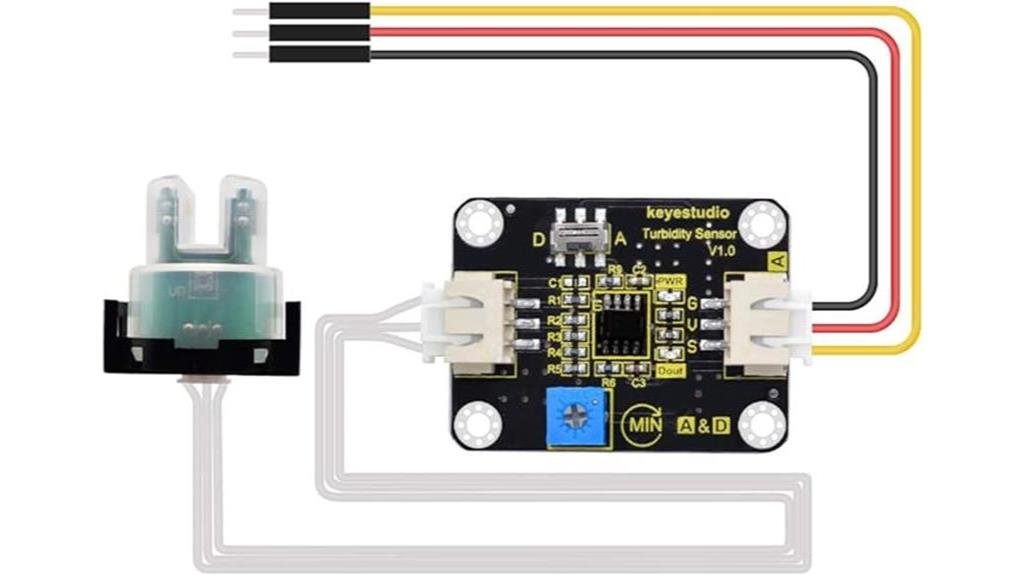
If you're looking for a reliable and user-friendly water quality monitor, the KEYESTUDIO Turbidity Sensor Module for Arduino is an excellent choice. This sensor is designed to detect water quality by measuring turbidity levels. It converts current signals into voltage output, with lower output voltage indicating higher turbidity values. The detection range is 0%-3.5% (0-4550NTU), with an error range of ±0.5%F*S. To ensure accurate readings, only the transparent part of the sensor should be placed in the water, and caution must be taken to avoid damaging the non-waterproof sensor. The sensitivity of the sensor can be adjusted using the blue potentiometer on the sensor.
With its accurate readings and easy-to-use interface, this turbidity sensor is ideal for measuring water quality in rivers, streams, wastewater, and even for sediment transport research and laboratory measurements.
Best For: Individuals or organizations monitoring water quality in rivers, streams, wastewater, or conducting sediment transport research and laboratory measurements.
Pros:
- Accurate and instant readings of water clarity
- Easy to use and connect to an Arduino
- Can detect small changes in water purity and monitor conditions remotely
Cons:
- Sensor isn't waterproof, additional waterproofing may be required for certain applications
Manifold Absolute Pressure Map Sensor for Chevrolet, Buick, Cadillac, GMC, Saturn, Oldsmobile, Hummer, Isuzu, Pontiac, Bonneville, and Saab
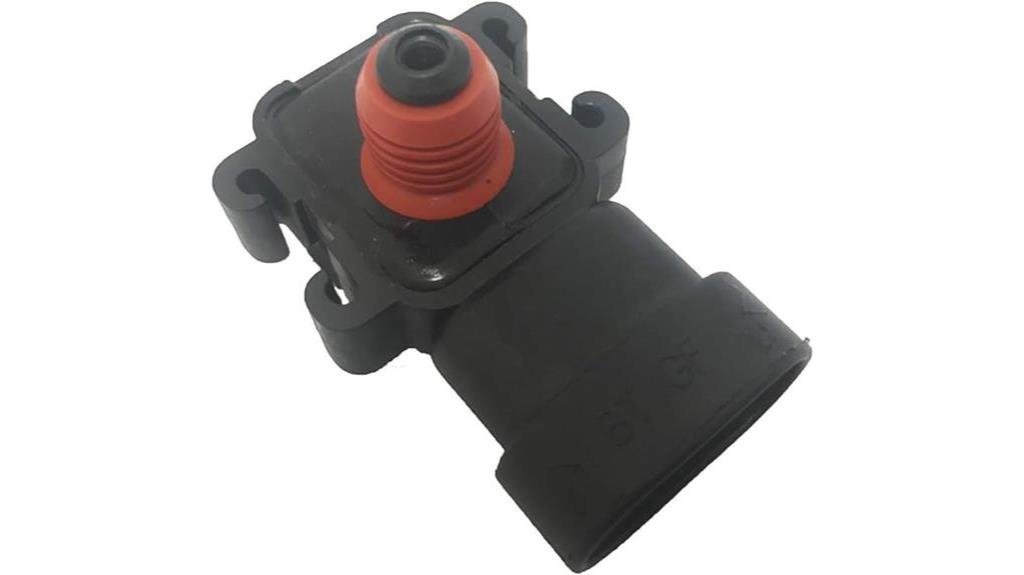
For Chevrolet, Buick, Cadillac, GMC, Saturn, Oldsmobile, Hummer, Isuzu, Pontiac, Bonneville, and Saab owners, the Manifold Absolute Pressure Map Sensor by YCT AUTO is an essential component for efficient engine performance. This sensor, with a part number fitment of 16187556, 9359409, 12614973, and more, is compatible with various models of these brands.
It weighs only 0.634 ounces and has package dimensions of 3.11 x 1.93 x 1.89 inches. With a 4.3 out of 5-star rating from over 1,100 customer reviews, it's highly regarded for its ability to fix issues and provide a cost-effective solution. However, some negative reviews mention fit and quality issues.
Before purchasing, it's important to confirm the car model and OE part number, as well as verify the part picture. If the sensor doesn't fit, instructions are provided for returning it.
Map Manifold Absolute Pressure Sensor (12569240 16137039 16017460 SU105)

The Map Manifold Absolute Pressure Sensor (12569240 16137039 16017460 SU105) is a crucial component for monitoring intake manifold or vacuum pressure in various engine working loads, providing high reliability and stability for the safe and intelligent operation of your vehicle. This sensor replaces various OEM parts and is compatible with vehicles such as Chevy Impala, Chevy K1500, Buick Century, GMC Yukon, Jeep Wrangler, and Oldsmobile Alero.
It functions by monitoring the change in intake manifold or vacuum pressure and sending corresponding signals to the ECU. Installing this sensor is easy, simply remove the old part and replace it with the new one. By choosing this Map Manifold Absolute Pressure Sensor, you can solve vehicle problems on your own and save both time and money.
Best For: DIY car enthusiasts and owners of compatible vehicles who want to replace their aging or damaged manifold absolute pressure sensor for improved performance and functionality.
Pros:
- High reliability and stability for accurate monitoring of intake manifold or vacuum pressure.
- Easy installation process, saving time and money on professional repairs.
- Compatible with a wide range of vehicle models, including Chevy Impala, Chevy K1500, Buick Century, GMC Yukon, Jeep Wrangler, and Oldsmobile Alero.
Cons:
- Requires careful matching of parts, connectors, and plugs to ensure compatibility with your old sensor.
SDYYDS Upstream 4-Wire O2 Oxygen Sensor for Nissan Altima, Frontier, Xterra, Quest, Infiniti G37, M37

With its easy installation, resistance to temperature and vibration damage, and 1-year warranty, the SDYYDS Upstream 4-Wire O2 Oxygen Sensor is a reliable choice for those seeking improved fuel efficiency and stable performance in their Nissan Altima, Frontier, Xterra, Quest, Infiniti G37, or M37.
This sensor is designed with OE connectors and OE specification wire lengths, making installation easier and ensuring protection against high temperature, vibration damage, and wire corrosion. This not only protects the signal accuracy and longevity of the sensor but also contributes to improved fuel efficiency and stable performance.
Additionally, the SDYYDS Upstream 4-Wire O2 Oxygen Sensor comes with a 1-year warranty, providing peace of mind and assurance of its durability.
ACDelco Professional 213-4514 Engine Coolant Temperature Sensor

Ideal for those seeking a reliable and high-performance engine coolant temperature sensor, the ACDelco Professional 213-4514 offers the dependability you need for your smart home or IoT applications. This professional, premium aftermarket replacement is manufactured to meet expectations for fit, form, and function.
With dimensions of 3.6 x 2.2 x 1.7 inches and a weight of 0.634 ounces, it's designed for modern style and flange mounting. The ACDelco Professional 213-4514 is known for its exceptional quality, as evidenced by its 4.7 out of 5-star rating and over 4,000 customer reviews. Customers praise its effectiveness in fixing temperature gauge issues and fan operation, making it a cost-effective alternative to professional repairs.
Trust the ACDelco Professional 213-4514 for accurate and reliable engine coolant temperature readings in your smart home or IoT applications.
Best For: Vehicle owners seeking a reliable and cost-effective solution for fixing temperature gauge issues and fan operation.
Pros:
- Professional, premium aftermarket replacement
- Manufactured to meet expectations for fit, form, and function
- Exceptional quality with a 4.7 out of 5-star rating and over 4,000 customer reviews
Cons:
- None mentioned in the provided information.
DOSKJOK O2 Oxygen Sensor Compatible with Accord, Odyssey, Pilot, Ridgeline, S2000, MDX, RL, TL (1Pcs)

For those looking to enhance their vehicle's fuel economy and reduce exhaust emissions, the DOSKJOK O2 Oxygen Sensor is a compatible and reliable option for Accord, Odyssey, Pilot, Ridgeline, S2000, MDX, RL, and TL models.
This oxygen sensor is manufactured under rigorous scientific standards and is 100% tested out of the factory, ensuring its durability and reliability. It's designed to be oxidation resistant and can withstand high temperatures.
By installing the DOSKJOK O2 Oxygen Sensor, you can improve your vehicle's fuel economy and help the engine operate smoothly. Additionally, this sensor reduces exhaust emissions, making it an environmentally friendly choice.
The installation process is easy, and the sensor comes with pre-coated threads for assistance. Before purchasing, make sure to check the compatibility with your specific vehicle model.
Best For:
Vehicle owners who want to improve fuel economy and reduce exhaust emissions.
Pros:
- Manufactured under rigorous scientific standards
- Durable, oxidation resistant, and can withstand high temperatures
- Easy installation with pre-coated threads
Cons:
- Compatibility with specific vehicle models should be checked before purchasing
BELOMI Oxygen Sensor Socket (Large)
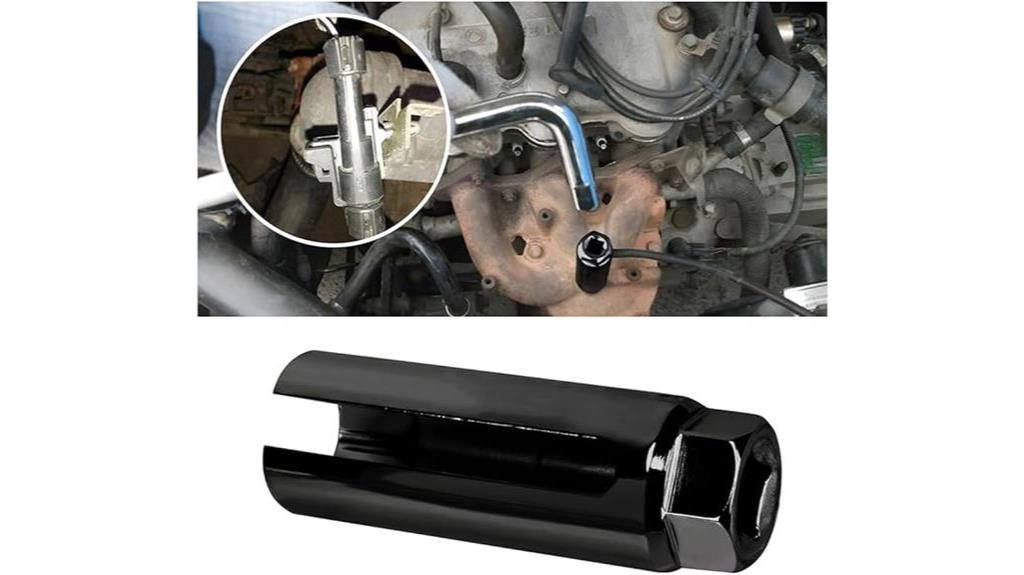
The BELOMI Oxygen Sensor Socket (Large) is a high-quality tool made of 65 manganese steel, designed for easy removal and installation of oxygen sensors and hexagonal vacuum switches on cars. This universal 6-point socket features a 7/8 inch (22mm) size, making it compatible with a wide range of vehicles. Its standard 6-point slotted design includes a side cutout, preventing wire damage during use.
The socket is strictly inspected before shipment, ensuring an excellent user experience. It's easy to identify, thanks to the clear scale on the socket. The side opening design allows for easy sliding into the sensor, further preventing wire damage. Additionally, the socket is corrosion-resistant, thanks to its tough 65 manganese steel construction with a black oxidized surface that prevents rust and corrosion.
Overall, the BELOMI Oxygen Sensor Socket (Large) is a reliable and efficient tool for automotive sensor installation and removal.
Best For: Mechanics and car enthusiasts who need a reliable and versatile tool for removing and installing oxygen sensors and hexagonal vacuum switches on cars.
Pros:
- Made of high-quality 65 manganese steel for durability and strength
- Universal 6-point 7/8 inch (22mm) socket compatible with a wide range of vehicles
- Standard 6-point slotted design with side cutout to prevent wire damage
Cons:
- May not fit certain vehicles with non-standard sensor sizes
Ring Alarm Contact Sensor 2-pack (2nd Gen)

Experience enhanced home security and peace of mind with the Ring Alarm Contact Sensor 2-pack (2nd Gen), providing instant mobile alerts and easy installation for anyone seeking reliable door and window monitoring.
This sensor pack offers a range of features to ensure your home remains secure. With smaller size and increased placement options, you can easily mount these sensors to your door and window frames. The installation process is hassle-free, requiring no tools. The sensors are powered by two 3V CR2032 batteries, which have a battery life of approximately 3 years. These sensors connect to the Ring Alarm Base Station using Z-Wave technology, with a range of 250 feet in open air, line of sight conditions.
With a 1-year limited warranty, the Ring Alarm Contact Sensor 2-pack (2nd Gen) provides the reliability and convenience you need for your smart home security system.
Best For: Those who want a reliable and easy-to-install door and window monitoring system for enhanced home security.
Pros:
- Instant mobile alerts when doors and windows open
- Smaller size for increased placement options
- Easy installation with no tools required
Cons:
- Minor inconvenience of periodic battery replacement
Higherbro Air Fuel Ratio Oxygen Sensor Set for Nissan Xterra, Frontier, Pathfinder 2005-2006 (4.0L)
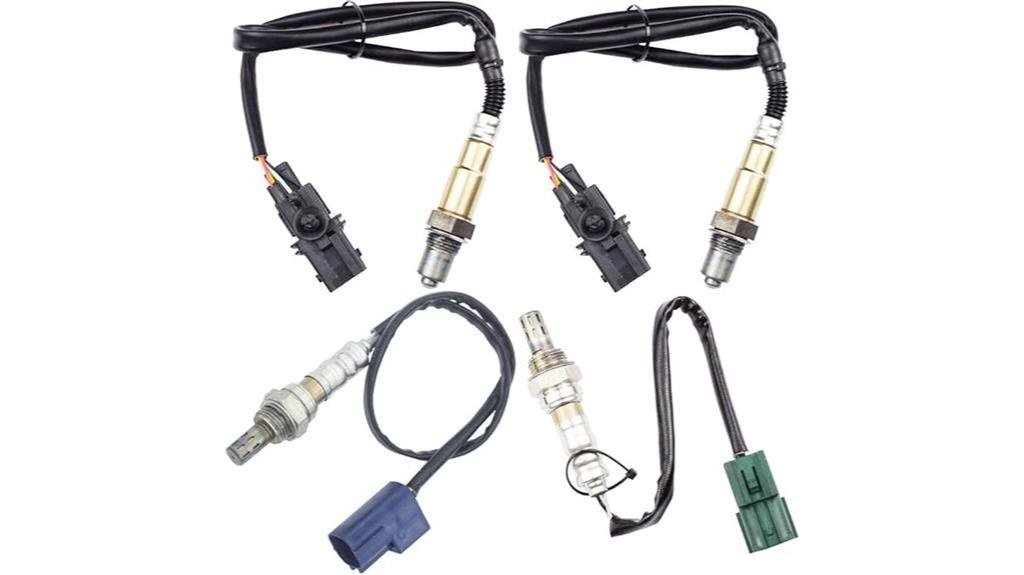
If you own a Nissan Xterra, Frontier, or Pathfinder from 2005-2006 with a 4.0L engine, the Higherbro Air Fuel Ratio Oxygen Sensor Set is a reliable and efficient choice. This set includes 4 sensors, with 2 upstream (Air Fuel Ratio Sensor) and 2 downstream sensors for installation.
Manufactured by Higher-autoparts and branded as higherbro, this sensor set has received positive feedback from customers, with an average rating of 3.8 out of 5 stars from 127 ratings. It weighs 1.32 pounds and has dimensions of 6.26 x 5.12 x 4.69 inches.
With a one-year quality guarantee and a competitive price, these sensors are a great option to ensure optimal performance of your Nissan vehicle's air fuel ratio.
Best For: Owners of Nissan Xterra, Frontier, and Pathfinder vehicles from 2005-2006 with a 4.0L engine.
Pros:
- Reliable and efficient air fuel ratio sensors
- Includes both upstream and downstream sensors for complete installation
- Positive customer feedback and average rating of 3.8 out of 5 stars
Cons:
- One customer reported a sensor failure within 30 minutes of installation
Factors to Consider When Choosing Sensors
When choosing sensors for your smart home or IoT applications, there are several factors you need to consider.
First, you should think about the type of sensor you need, whether it's a motion sensor, temperature sensor, or light sensor.
Accuracy and precision are also crucial, as you want sensors that provide reliable and consistent data.
Additionally, make sure the sensors you choose are compatible with your devices and can withstand the environmental conditions they'll be exposed to.
Lastly, consider the installation process to ensure it's straightforward and convenient for your needs.
Sensor Types
Different sensor types offer a range of functionalities and applications, such as temperature sensors, pressure sensors, proximity sensors, motion sensors, and chemical sensors. Sensors can also be categorized as analog or digital, with analog sensors providing continuous output and digital sensors providing discrete output.
Common sensor technologies include resistive, capacitive, inductive, and optical sensors, each suitable for specific applications based on their principles of operation.
When choosing a sensor, it's important to consider factors such as detection range, accuracy, response time, and environmental operating conditions. Additionally, it's crucial to ensure compatibility with the intended system or platform, whether it's microcontroller-based, IoT devices, or industrial control systems.
Accuracy and Precision
When selecting a sensor, considering factors such as accuracy and precision is crucial for ensuring reliable and trustworthy measurements. Accuracy refers to how close a sensor's measurement is to the true value, while precision refers to the consistency of the sensor's measurements.
A highly accurate sensor provides measurements that are very close to the actual value being measured, while a highly precise sensor provides consistent results even if they aren't close to the true value. It's important to consider both accuracy and precision when choosing a sensor, as they impact the reliability and trustworthiness of the sensor's measurements.
Various factors, such as environmental conditions, sensor calibration, and the quality of the sensor components, can influence accuracy and precision. Understanding the accuracy and precision specifications of a sensor is crucial for selecting the right sensor to meet specific measurement requirements.
Compatibility With Devices
To ensure seamless integration, it's crucial to check the compatibility of the sensor with your specific devices or systems. Consider the compatibility of the sensor with different platforms or operating systems for easy integration and data collection.
You should ensure that the sensor's output format and interface align with the input requirements of your existing devices or equipment. It's also important to look for sensors that offer compatibility with a wide range of devices or controllers to provide flexibility in usage.
Additionally, consider the compatibility of the sensor with industry-standard communication protocols to facilitate connectivity with various devices and systems. By taking these factors into account, you can ensure that the sensor you choose will be compatible with your existing devices and systems, enabling smooth and efficient operation in your smart home or IoT applications.
Environmental Conditions
Consider the impact of environmental conditions on sensor performance when choosing sensors for your smart home or IoT applications.
Environmental conditions such as temperature, humidity, and air quality can significantly affect sensor accuracy and reliability.
If you plan to deploy sensors in harsh environments, it's essential to select ruggedized sensors that can withstand exposure to moisture, dust, extreme temperatures, and other elements.
Additionally, some sensors have specific operating temperature ranges, and exceeding these limits can compromise their accuracy and longevity.
Understanding the environmental conditions where your sensors will be deployed is crucial for selecting the right sensor that can reliably function in those conditions.
It may also influence the method of sensor installation and any additional protective measures that may be necessary to ensure optimal sensor performance.
Installation Process
Understanding the impact of environmental conditions on sensor performance is crucial. Equally important is considering the installation process when choosing sensors for your smart home or IoT applications.
When installing a turbidity sensor, make sure to only place its transparent part in the water and avoid complete immersion to prevent damage.
For MAP sensors, confirm the car model and OE part number before purchase. Verify compatibility by checking the part picture.
The installation of an O2 oxygen sensor involves connecting OE connectors and using OE specification wire lengths for easier installation.
The ACDelco engine coolant temperature sensor offers professional, premium aftermarket replacement with easy installation.
The Ring Alarm Contact Sensor 2-pack (2nd Gen) provides no-tools-required installation with adhesive strips. However, screws are recommended for frequent movers.
Considering the installation process ensures proper functioning and longevity of the sensors in your smart home or IoT applications.
Maintenance Requirements
Regular calibration and testing, along with proper cleaning and maintenance, are essential factors to keep in mind when choosing sensors for your smart home or IoT applications. To ensure accurate readings and optimal performance, it may be necessary to calibrate the sensors regularly. This involves comparing the sensor's output to a known reference and adjusting it accordingly.
Additionally, cleaning and maintaining the sensors and their associated components is crucial to prevent any buildup or damage that could affect their functionality. Regular inspection for physical damage, wear, or corrosion is also important to ensure proper functioning.
Over time, sensor components may need replacement due to wear, aging, or exposure to environmental factors. It's imperative to follow the manufacturer's recommended maintenance schedule and procedures to ensure the longevity and reliability of your sensors.
Cost and Budget
When choosing sensors for your smart home or IoT applications, it's important to take into account the cost and budget implications, as they can vary widely.
You should consider not only the initial cost of acquiring the sensor, but also any additional costs such as installation, maintenance, and calibration. It's essential to evaluate the long-term cost implications, including potential energy consumption and operational costs associated with the sensor.
Furthermore, you need to consider the potential impact of sensor failure and the associated costs of downtime and replacement.
To make an informed decision while staying within budget constraints, compare the cost of different sensors with similar functionalities.
Available Features
Consider the specific features and functionalities offered by different sensors when choosing the right one for your smart home or IoT applications.
One important feature to look for is adjustable sensitivity, which allows you to customize the detection levels according to your needs. This can be achieved using potentiometers.
Additionally, some sensors can be operated in analog or digital mode, offering versatile output readings.
If you plan to use the sensor in wet or submerged environments, it's crucial to choose a sensor with waterproof features.
Another factor to consider is compatibility with specific vehicle models or equipment, as some sensors are designed for specific fitment.
To gauge the accuracy, ease of use, and performance of the sensors, it's also helpful to check user feedback or reviews.
Frequently Asked Questions
What Are the Key Factors to Consider When Choosing Sensors for Smart Homes and Iot Applications?
When choosing sensors for smart homes and IoT applications, there are several key factors to consider.
First, think about the specific needs of your smart home or IoT system. Consider what types of data you want to collect and monitor.
Next, evaluate the compatibility of the sensors with your existing devices and platforms.
Additionally, consider the accuracy, reliability, and cost of the sensors.
Lastly, think about the power requirements and connectivity options of the sensors.
Can the KEYESTUDIO Turbidity Sensor Module Be Used for Monitoring Other Types of Water Quality Besides Turbidity?
Yes, the keyestudio turbidity sensor module can be used for monitoring other types of water quality besides turbidity.
It's a versatile sensor that can measure the level of contaminants, suspended solids, and other impurities in the water.
With its high sensitivity and accurate readings, you can rely on this sensor to ensure the overall quality and safety of the water in your smart home or IoT application.
Is the Manifold Absolute Pressure Map Sensor Compatible With All Chevrolet, Buick, Cadillac, GMC, Saturn, Oldsmobile, Hummer, Isuzu, Pontiac, Bonneville, and Saab Models?
Yes, the manifold absolute pressure (MAP) sensor is compatible with all Chevrolet, Buick, Cadillac, GMC, Saturn, Oldsmobile, Hummer, Isuzu, Pontiac, Bonneville, and Saab models.
It's an essential sensor that measures the pressure inside the intake manifold and helps the engine control unit (ECU) determine the engine's fuel injection and ignition timing.
This sensor ensures optimal performance and fuel efficiency in your vehicle, regardless of the make or model.
How Many Wires Does the SDYYDS Upstream 4-Wire O2 Oxygen Sensor Have?
The sdyyds upstream 4-wire o2 oxygen sensor has four wires. It's designed to measure the oxygen levels in the exhaust gases of your vehicle's engine.
These sensors play a crucial role in the proper functioning of the engine and emissions system. By monitoring the oxygen levels, the sensor helps the engine control module make adjustments to optimize fuel efficiency and reduce harmful emissions.
Can the Ring Alarm Contact Sensor 2-Pack (2nd Gen) Be Used With the First Generation Ring Alarm System?
Yes, the Ring Alarm Contact Sensor 2-Pack (2nd Gen) can be used with the first generation Ring Alarm system. It's compatible with both generations, allowing you to easily expand your home security setup.
These contact sensors are designed to alert you whenever a door or window is opened, providing an added layer of protection for your smart home.
With their easy installation and reliable performance, they're a great choice for enhancing your Ring Alarm system.
Conclusion
In conclusion, when it comes to smart homes and IoT applications, choosing the right sensors is crucial.
The KEYESTUDIO Turbidity Sensor Module and SDYYDS Upstream 4-Wire O2 Oxygen Sensor are excellent options for monitoring water quality and oxygen levels.
The ACDelco Professional Engine Coolant Temperature Sensor is essential for maintaining optimal engine performance.
The Ring Alarm Contact Sensor 2-pack provides security for your home.
Considering factors like compatibility and functionality will help you make the best choice for your smart home or IoT project.



